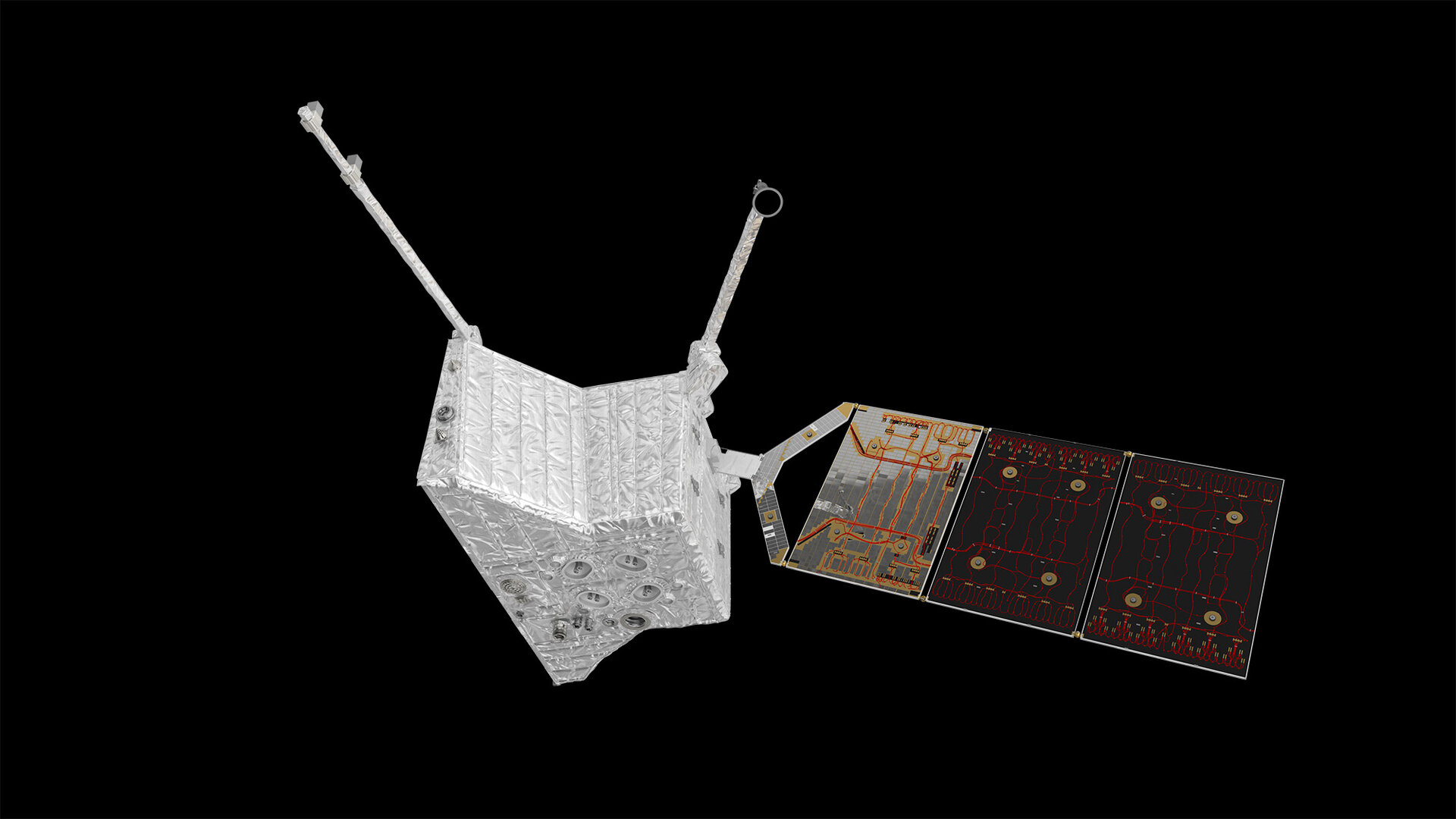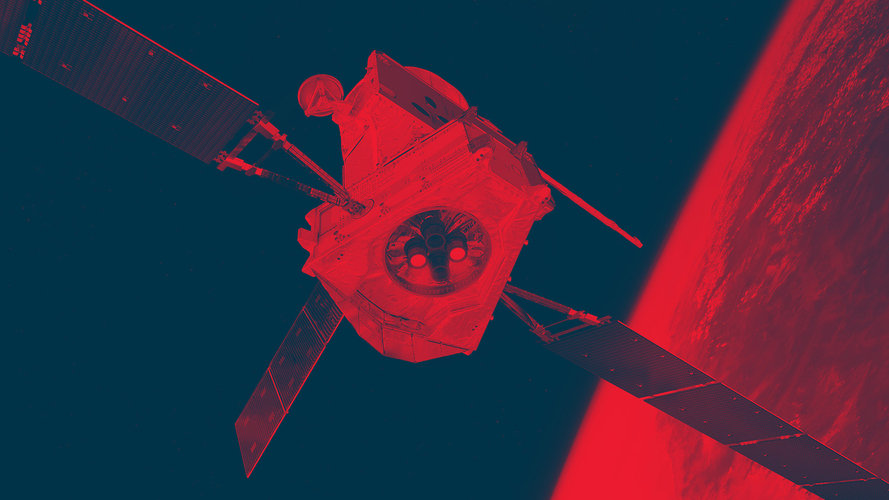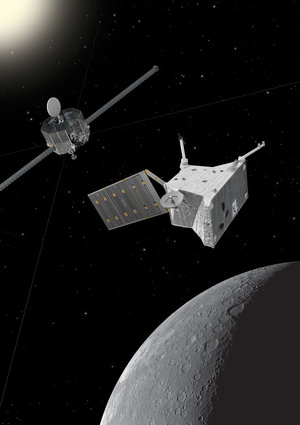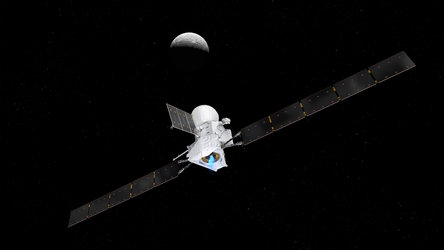Mercury Planetary Orbiter
ESA’s Mercury Planetary Orbiter will operate from a 2.3 hour polar orbit at an altitude of 480 x 1500 km above the planet’s surface.
The main body of the spacecraft measures 2.4 x 2.2 x 1.7 m and its radiator is 3.7 m wide. The deployed solar wing spans 7.5 m.

The orbiter comprises a suite of 11 science experiments:
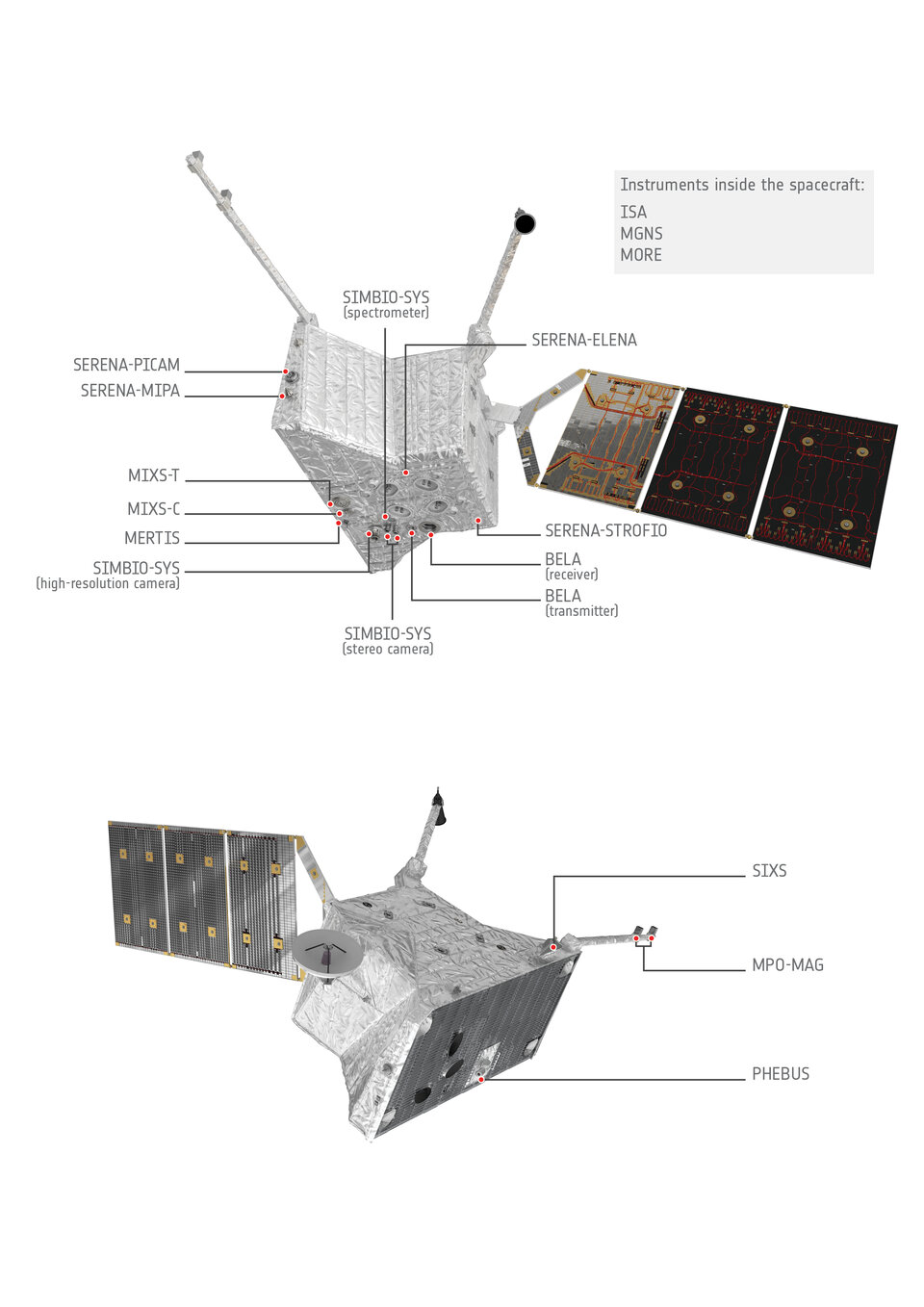
BepiColombo Laser Altimeter (BELA): Characterising and measuring the topography and surface morphology of Mercury to create digital terrain models. Principal Investigators: Nicolas Thomas, University of Bern, Switzerland, & Hauke Hussmann, DLR Institut für Planetenforschung, Berlin, Germany.
Italian Spring Accelerometer (ISA): Providing information on Mercury’s interior structure and testing Einstein's theory of General Relativity to an unprecedented level of accuracy. Principal Investigator: Francesco Santoli, INAF-IAPS Istituto di Astrofisica e Planetologia Spaziali, Rome, Italy.
Magnetic Field Investigation (MPO-MAG): Measuring Mercury’s magnetic field, the interaction of the solar wind, and the formation and dynamics of the magnetosphere, and understanding the origin, evolution and current state of the planet’s interior. Principal Investigator: Daniel Heyner, Technische Universität Braunschweig, Germany.
Mercury Radiometer and Thermal Infrared Spectrometer (MERTIS): Detailing the mineralogical composition of Mercury’s surface, its temperature and thermal inertia, important for models of the origin and evolution of the planet. Principal Investigator: Harald Hiesinger, University of Münster, Germany.
Mercury Gamma-ray and Neutron Spectrometer (MGNS): Determining the elemental compositions of the surface and subsurface of Mercury, and identifying the regional distribution of volatiles in permanently shadowed polar regions. Principal Investigator: Igor Mitrofanov, Russian Academy of Sciences, Space Research Institute, IKI, Moscow, Russian Federation.
Mercury Imaging X-ray Spectrometer (MIXS): Producing a global map of Mercury’s surface atomic composition at high spatial resolution. Principal Investigator: Emma Bunce, Space Research Centre, University of Leicester, UK.
Mercury Orbiter Radio science Experiment (MORE): Determining the gravity field of Mercury, and the size and physical state of its core; measuring the gravitational oblateness of the Sun and testing the most advanced interplanetary tracking system ever built. Principal Investigator: Luciano Iess, University of Rome ‘La Sapienza’, Italy.
Probing of Hermean Exosphere by Ultraviolet Spectroscopy (PHEBUS): Characterising Mercury’s exosphere composition and dynamics and searching for surface ice layers in permanently shadowed regions of high-latitude craters. Principal Investigator: Eric Quémerais, LATMOS-IPSL, Guyancourt, France.
Search for Exosphere Refilling and Emitted Neutral Abundances (SERENA): (neutral and ionised particle analyser) Studying the gaseous interaction between Mercury’s surface, exosphere, magnetosphere and the solar wind and interplanetary medium. Principal Investigator: Anna Milillo, INAF-IAPS Istituto di Astrofisica e Planetologia Spaziali, Rome, Italy.
Spectrometers and Imagers for MPO BepiColombo Integrated Observatory (SIMBIO-SYS): Examining with stereo and colour imaging, and spectroscopic analysis, Mercury’s surface geology, volcanism, global tectonics, surface age and composition. Principal Investigator: Gabriele Cremonese, INAF-Osservatorio Astronomico di Padova, Italy.
Solar Intensity X-ray and particle Spectrometer (SIXS): Monitoring the flux of X-rays and particles of solar origin. Principal Investigator: Emilia Kilpua, University of Helsinki, Department of Physics, Finland.















 Germany
Germany
 Austria
Austria
 Belgium
Belgium
 Denmark
Denmark
 Spain
Spain
 Estonia
Estonia
 Finland
Finland
 France
France
 Greece
Greece
 Hungary
Hungary
 Ireland
Ireland
 Italy
Italy
 Luxembourg
Luxembourg
 Norway
Norway
 The Netherlands
The Netherlands
 Poland
Poland
 Portugal
Portugal
 Czechia
Czechia
 Romania
Romania
 United Kingdom
United Kingdom
 Slovenia
Slovenia
 Sweden
Sweden
 Switzerland
Switzerland

























